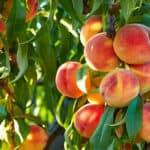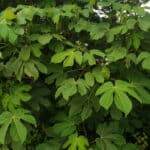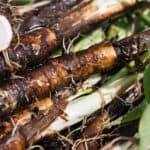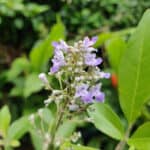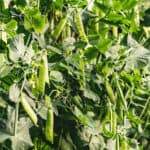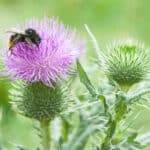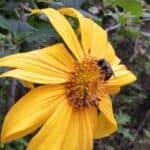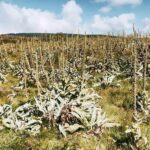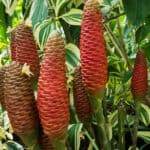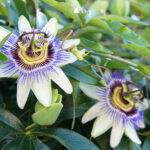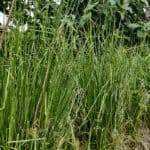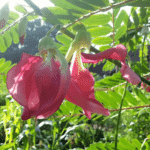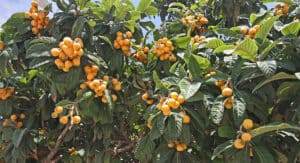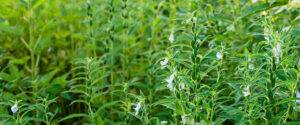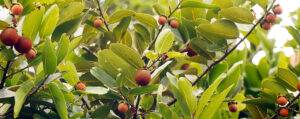Katuk is a delightful perennial for anyone practicing permaculture or regenerative agriculture in tropical climates. It is fast-growing, robust, and contains ultra-nutritious foliage high in vitamins and protein. Most importantly, it’s pleasant to eat with a nutty and sweet flavor that makes a great addition to salads and cooked dishes. It also serves great as biomass and hedges.
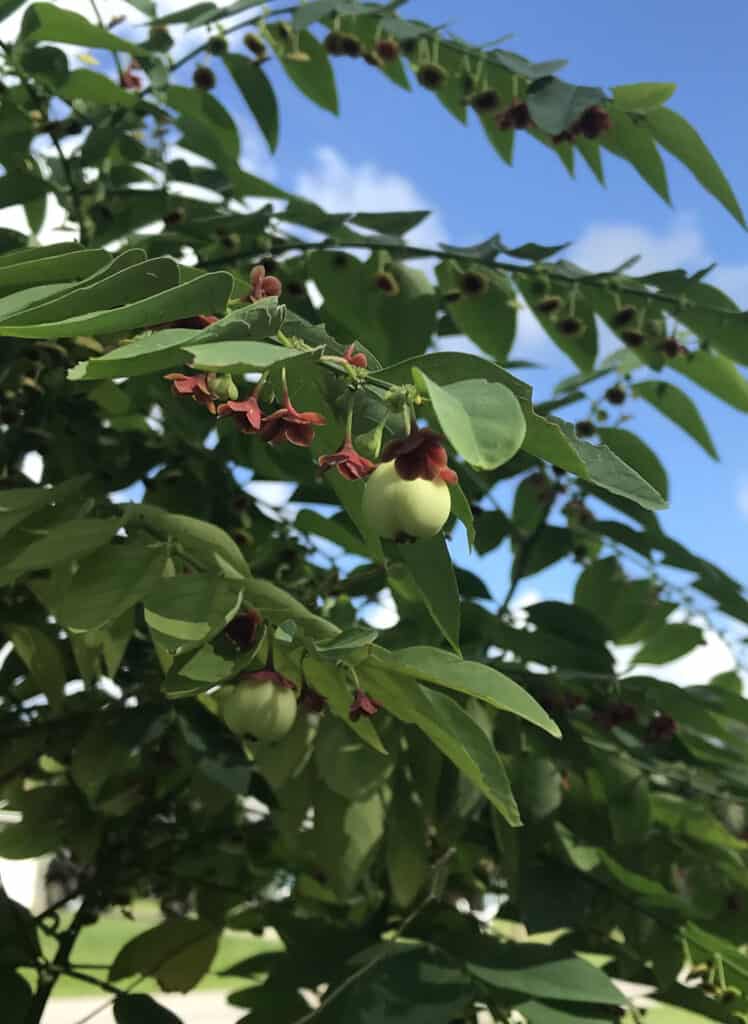
It originates from southeast Asia where it is commonly cooked for consumption and used medicinally. This includes Indonesia, Malaysia, Vietnam, and other nearby countries. Here it is frequently cultivated near homes for personal consumption and medicine. It can also be found in markets.
Note To Reader
While moderate consumption of Katuk is perfectly safe, overindulgence is not recommended. There’s no problem snacking a couple of leaves in the garden or adding some to a salad, but it is not something you want to be whipping up huge salads of every day. We will discuss this in the edibility section of this article.
Description
Its scientific name is Breynia androgynus and it is in the family Phyllanthaceae. It was historically known as Sauropus androgynus and placed in the Euphorbiaceae.
The plants tend to grow tall and lanky, reaching easily 3-4 meters in height given adequate conditions. They are relatively tender and can grow bushy after being cut back regularly. They rarely form large trunks.
It has alternating oval leaves about 6 cm long. Certain varieties have a white variegation down the central leaf vein. The foliage is hydrophobic and often accumulates water droplets on its surface after rain.
Katuk produces succulent purple flowers that make way to a fruit that turns white and then pink. Once cut back the plant readily produces new vertical shoots from its nodes. It does not form side branches.
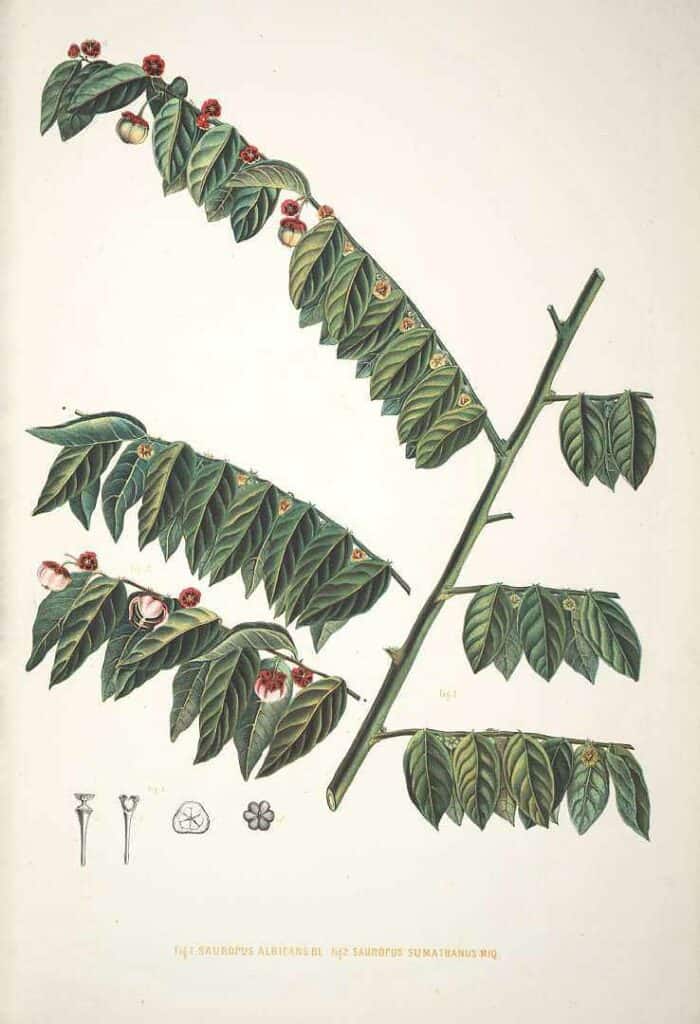
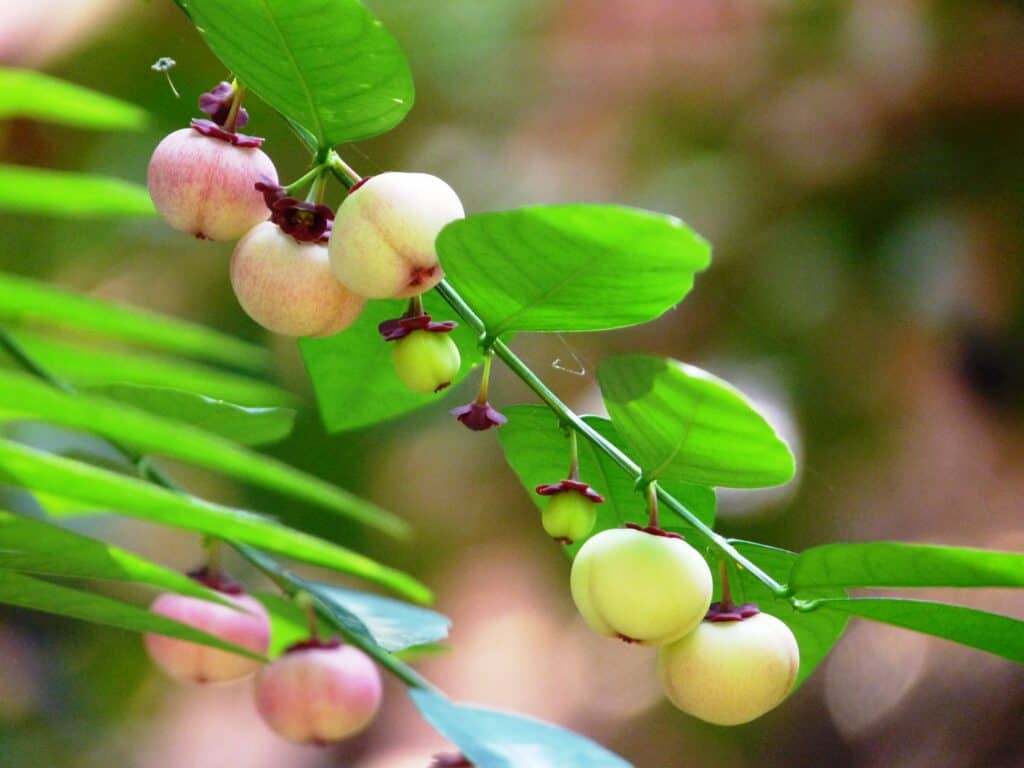
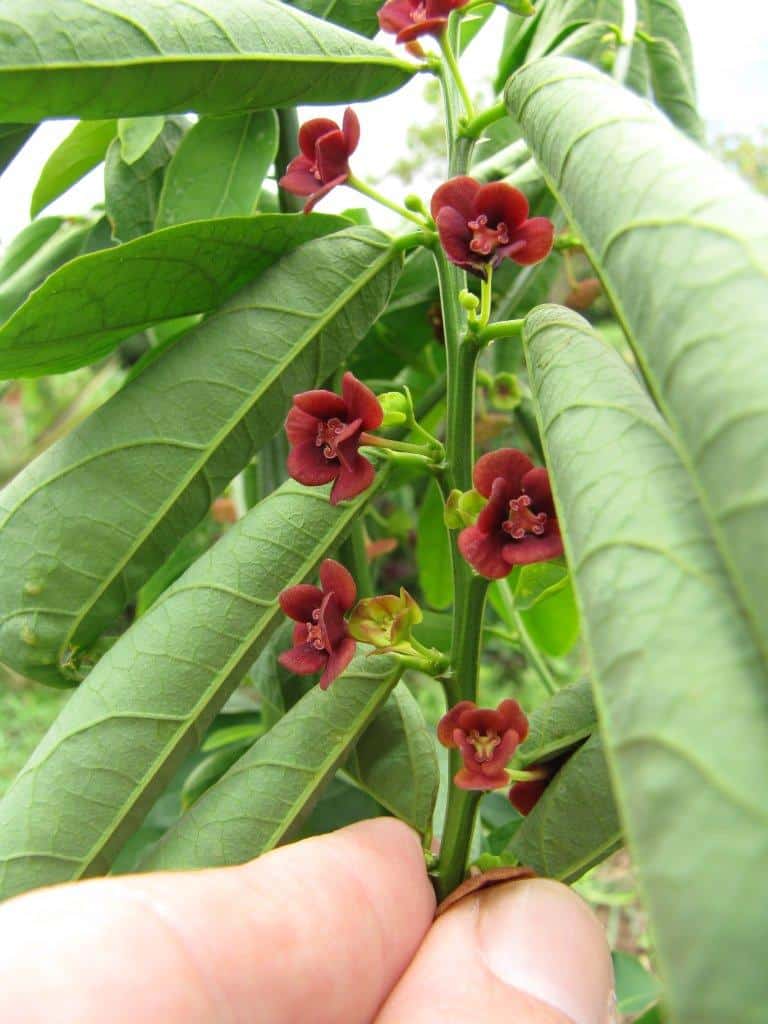
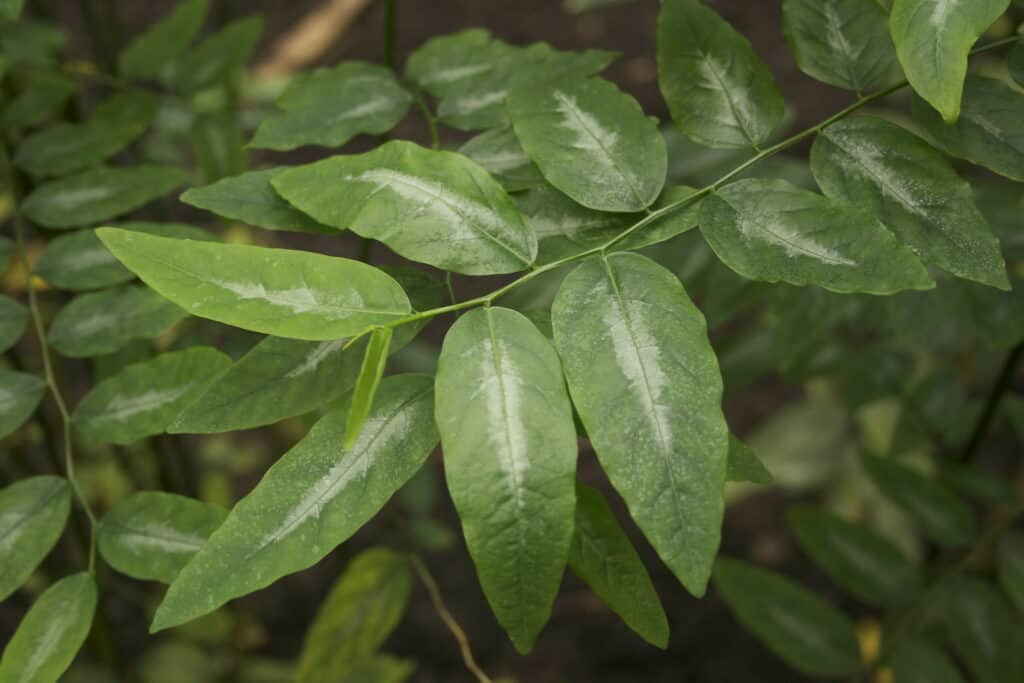

Cultivating Katuk
Katuk grows in the tropics up to altitudes well over 1000 meters. It enjoys partial shade but can be grown in full sun. It thrives best in the lowlands amongst wet tropical rainforests with high temperatures and humidity year-round. In these areas, it can have invasive tendencies and spread to disturbed forest edges and trail sides. You can grow Katuk fine in other tropical regions but its growth rate sharply decreases with cold temperatures or drought.
As previously mentioned, Katuk likes to grow at the edge of forests and in the partial shade of large trees. They like rich undisturbed soils with abundant leaf litter and moisture. While it is not limited to these locations, I’ve observed it grow more vigorously under these circumstances.
Propagation
Katuk can be easily propagated by cutting. It can also be grown with seeds but they can take several months to germinate.
Cuttings
- Cuttings should be taken from healthy plants at least 1-2 meters in height. You will want to take cuttings between 20-50 cm long.
- Carefully remove all of the side branches except for the top 4 branches.
- Now, these can either be planted directly into the ground or in pots.
- If planting directly into the ground there’s not too much needed to prepare the soil. Just make sure you have reliable rain and high humidity in the forecast for the next 2-3 months. You can plant it by opening up the soil with a spade and planting the cutting half buried into the soil. Mark it with a stick or flag if necessary. Compacted soils can be loosened. Mulch heavily to improve water retention and reduce competition with weeds.
- If planting directly into a pot just bury the cutting halfway in a well-draining soil mix. Keep it moist and well watered for the next 2-3 months.
- It may take 2-3 months before you start seeing much activity in your cuttings. Once they get established they will grow vigorously given proper conditions. Water additionally during dry spells to improve growth.
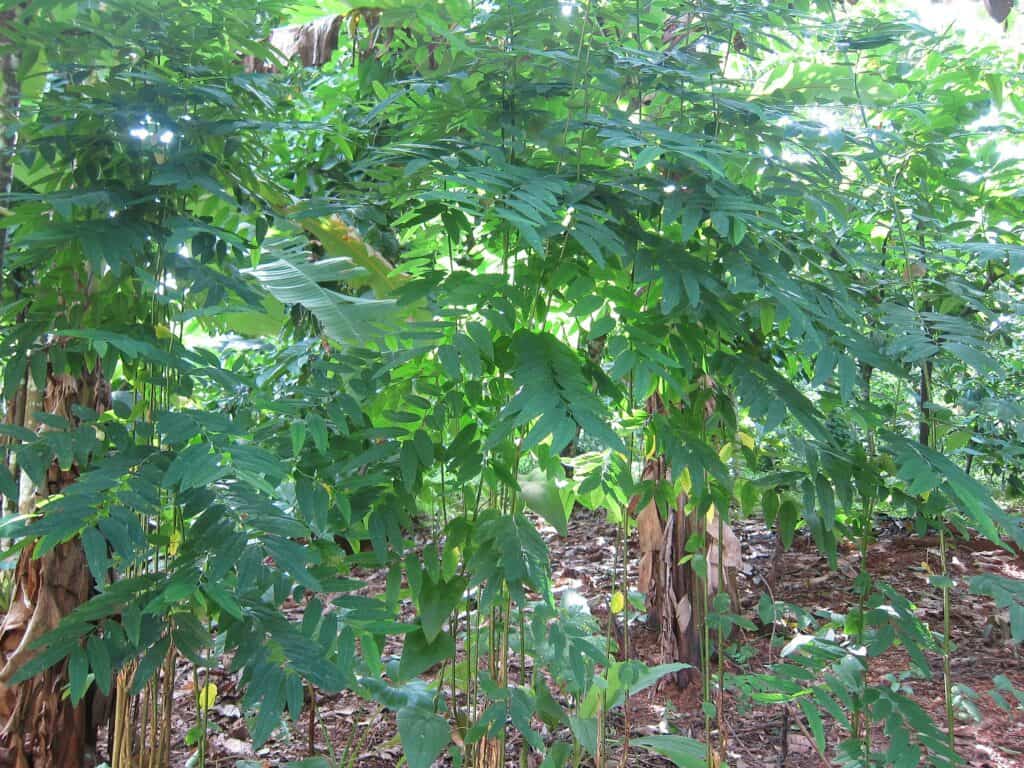
Seeds
These can be taken from mature fruits when the seeds are completely black. Very mature fruits eventually lose their fleshy tissues and leave just the seeds. These are the best for propagating. These can be buried 3-4 cm deep into the soil and kept well watered. It may take 2-3 months for seeds to germinate so keep a close eye.
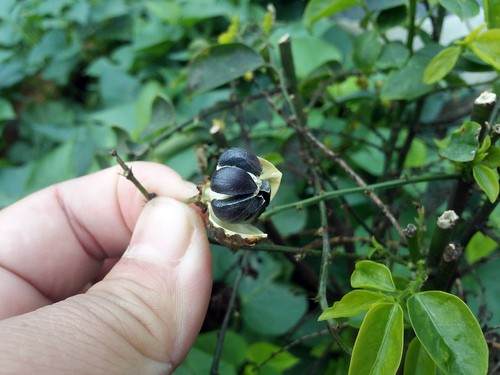
Caring For and Harvesting Katuk
There isn’t too much to be done when it comes to growing Katuk. Make sure your plant has plenty of access to water and it should do fine. Cutting it back regularly will promote easy access and nicer more tender growth.
When cutting it back, I prefer to chop just 10-20 cm from ground level. In large patches, you can do this with a sharp machete. You may have to hold the top of the plant to reduce its flexibility and get a nice clean cut. In smaller patches or individual plants you can use loppers or clippers.
Harvesting
The best part of Katuk is the top 10-20 cm of fresh growth. Older leaves tend to be woodier and less pleasant to eat.
You can easily find the perfect harvesting point by searching for where the main stem goes from tender to woody and simply snapping it off here by hand. If done properly it should easily snap and can even be done one-handed. This is how it is best harvested for eating. The tender stems can also be cooked.
Using Katuk
Eating Katuk and Toxicity Concerns
Katuk is a versatile and nutritious ingredient. It has a sweet, nutty flavor that pairs well with many dishes. While eating Katuk in moderation is perfectly safe, it is important not to eat it in excess. A dozen leaves in salad, yes, but a large Katuk-based salad every day might not be the best idea.
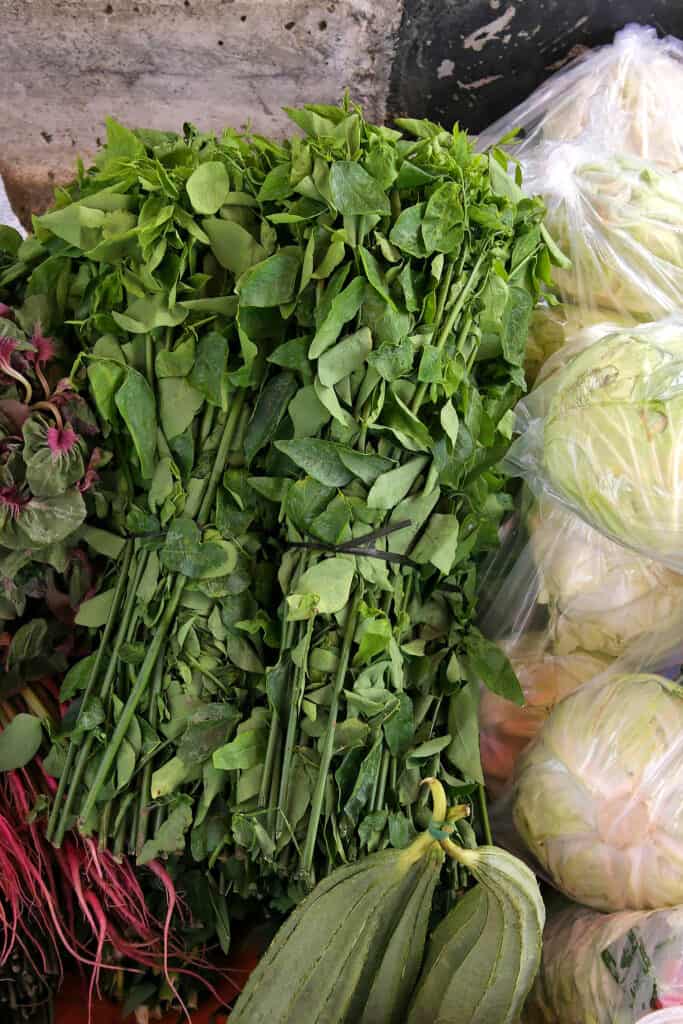

Why? Because it contains small quantities of a compound known as papaverine (which also occurs in poppies), when consumed in excess, it has been linked to lung damage. Don’t worry though, all serious health reports associated with Katuk are because of a diet-related juicing fad where katuk juice was marketed as a weight loss and “superfood” style health drink.
In these cases, excessive consumption (+100 grams/day) for 2+ months led to lung damage. It’s important to mention that these are unusual circumstances and high doses. I spent 6+ months eating Katuk regularly at a farm in Costa Rica with no problems. I have friends who have been eating it for years (and continue to do so) and are in excellent health. Not to mention it has a long history of traditional use.
Still, I think Katuk serves as a good example of why to bear mindfulness with some novel food plants used in Permaculture. When they are taken out of their traditional context, and without the guidance of local wisdom, anything can happen. Understanding how foods are traditionally consumed and how often (or why) they were consumed is important.
In Katuk’s case, it seems like traditionally, the most common way of consuming is by cooking the tender tops. In particular, it appears to be a food commonly consumed by women looking to improve lactation after giving birth.
My suggestion is to consume it in moderation. Snack it in the garden, throw a handful in a salad, or cook a couple of Katuk tips, but don’t consume in excess. Remember that many edible plants are also dangerous in excess. Moringa, Brazil Nuts, and even Spinach can be harmful if consumed in excess. Toxicity in large quantities is not something unique to this plant.
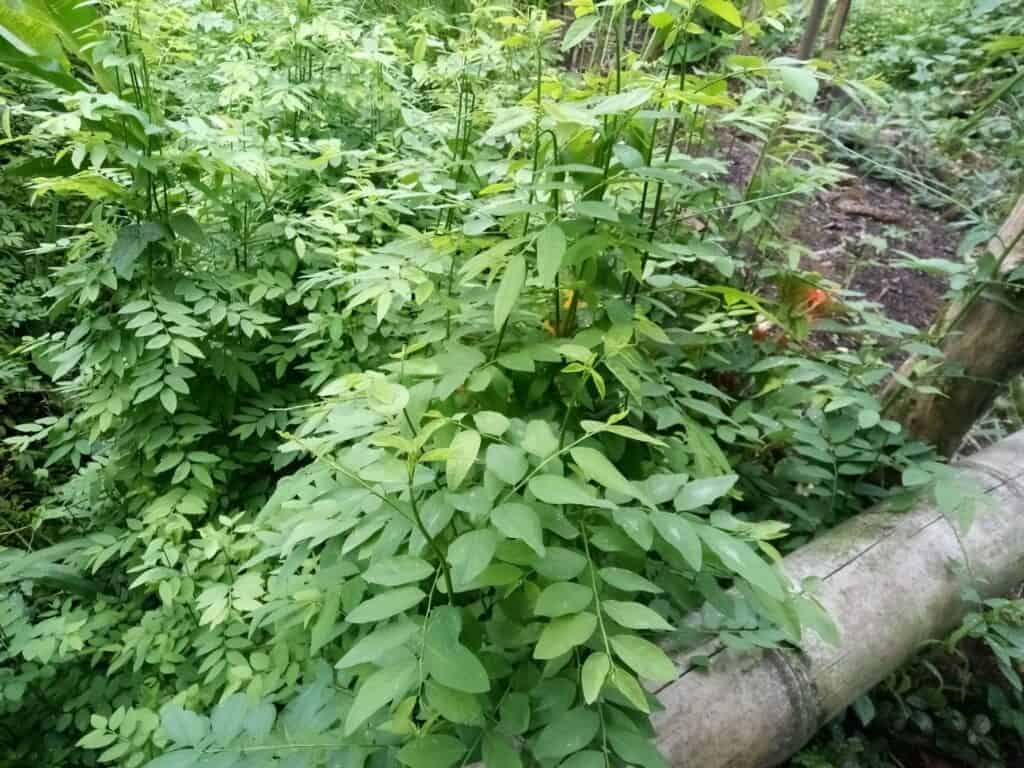
Agronomic Uses For Katuk
As Livestock Forage
Katuk can serve as excellent animal feed. Either as forage for goats and cows or as a leafy green for chickens. The high protein levels make a great addition to the animal’s diet. You can plant a row of Katuk along the fence of a chicken coop or animal pen for effortless access.
Biomass
Katuk works great as a chop and drop or green mulch. You can make hedges or plant them alongside other large perennials. Its biomass is full of nitrogen and minerals making it an excellent option for improving soil quality. It can be placed on a pile and chopped finely to speed up decomposition and improve the aesthetic look of the mulch. It can also make a great addition to compost
Plant Ferments
If you utilize fermented plant juices as a regime in your garden/farm then Katuk makes an excellent primary material. To conduct this I recommend only using leaves. Large quantities of leaves can be easily harvested by pulling the branches through a clasped hand starting near the main stem. This way all the leaves easily snap off, leaving the branch defoliated. Use these leaves as you would any other biomass in your fermented plant juice recipe.
Final Thoughts
Katuk is a wonderful plant. It’s not fussy, grows quickly, and is versatile in its uses. The aesthetic nature alone makes it a welcoming presence in a garden or farm. Not to mention they make a nice leafy snack to enjoy fresh off the plant. If you’re not so much into eating it then it’s also a wonderful source of nutrient-rich biomass. What is not to like about that?




